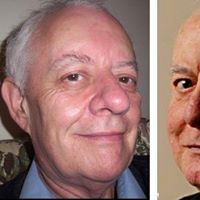What is tritium oxide?
Tritium oxide is water, H2O, except that the hydrogen is isotopic. Tritium oxide is called "tritilated" or "super-heavy," and is radioactive.
Hydrogen has three variants, protium (from "proton," the only nucleon in the nucleus), deuterium, and tritium (from Latin for "two" and "three," respectively). Deuterium has one proton and one neutron (two nucleons); tritium has one proton and two neutrons (three nucleons).
Protium accounts for 99.9% of naturally-occurring hydrogen on earth. About 0.02% (1 molecule in 3,200) is deuterium. Tritium accounts for about a billionth of a billionth of 1% of hydrogen. Of all earth-natural water, 99.9% is protium oxide, "normal" or "light" water, while deuterium oxide ("heavy water") and tritium oxide make up 0.02% and a minute fraction of 1%, respectively.
Naturally-occurring water is likely to have a few molecules of heavy water and may have a very few molecules of super-heavy water, but there is no health risk unless the source has been polluted by a relatively massive amount of tritiated water.
Heavy water is used to slow neutrons so they sustain fission in nuclear reactors. Tritiated water is produced for use in medicine and commerce and occurs incidentally from heavy water used as coolant in nuclear reactors.
Tritium oxide is represented as T2O or 3H2O; deuterium oxide, 2H2O or D2O. Here, "T" and "D" represent hydrogen's isotopes. The numbers before the "H" represent the number of nucleons in the isotope.
More Info:
en.wikipedia.org










